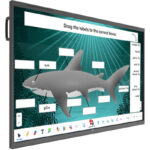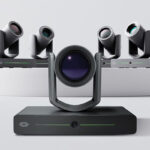As a display guy for more than 40 years, I believe it’s safe to say “been there, done that” display-wise. I’m not going to claim there is anything really new under the sun (sorry, direct-view LED fans!). However, a not-so-new display technology has caught my attention, and I feel it should find a place on your radar screens, as well. I am speaking about electronic paper, better known by the trade name E Ink.
Why should you pay attention? One compelling reason is that some digital signage and commercial display heavyweights are paying attention and putting their money where their mouth is. These industry leaders include Samsung, PPDS, Praevar, Sharp and DynaScan, just to name a few.
Don’t change the channel, folks! Permit me to explain why in more detail.
The Invention of E Ink
E Ink was invented in the ’90s by a team of scientists and engineers at the Massachusetts Institute of Technology (MIT) Media Lab. The biggest market for E Ink is the ubiquitous e-book. In 2024, the global number of e-book readers was estimated to reach 1.1 billion! (I promise that this article is not about e-books; rather, it’s about more recent developments that can benefit the commercial integration and security communities.)
How Does E ink Work?
E Ink operates on a simple principle: Microscopic particles within the display contain charged pigments that respond to an electric field. When a charge is applied, the particles move, creating patterns that form text and images. Unlike traditional displays that emit light, E Ink displays reflect ambient light, providing a paper-like reading experience.
What Are the Benefits of E Ink?
The most obvious strength of E Ink displays lies in their energy efficiency and their readability. These displays consume significantly less power than traditional LCD screens do. The high visibility of E Ink in different lighting conditions, including direct sunlight, also enhances the user experience. The not-so-obvious benefit is the claimed reduction in eyestrain, which makes E Ink an ideal choice for prolonged and continuous usage.
That claim has been substantiated in a Harvard peer-reviewed study that showed E Ink is up to three times healthier for your eyes than an LCD screen is. Full details of the study can be found at the Journal for the Society of Information Display.
Accumulated Screen Time
According to Nielson, the average adult spends about 13 hours per day behind a screen. Harvard shows the accumulated screen time comes with a price. It is the high-energy blue light — found in standard LCD and LED screens — that is potentially harmful when emitted into the eyes for hours at a time. According to the research, “Blue light poses a hazard in eyestrain and retinal cell damage in the eye, and exposure to blue light near bedtime reduces levels of the sleep-inducing hormone melatonin, disrupting the circadian rhythm and restorative sleep.”
Core benefits aside, the big news for E Ink is in color, display sizes and applications. Although color E Ink devices have been available to consumers since 2020, their color performance, to date, has not quite reflected how good color E Ink can really look. That is changing now, with more devices adopting E Ink’s new Kaleido 3 and Gallery 3 color panels. These can display 4,096 and 50,000 different shades, respectively. At the recent ISE in Barcelona, color E Ink was a major hit!
A Range of Sizes
Leveraging advanced color E Ink technology, several major vendors showed a range of sizes. These included 13 inches (1,600×1,200); 25 inches (3,200×1,800); 32 inches QHD (2,560×1,440); and a new outdoor version that is 75 inches 5K (5,120×2,880). The colors might not be up to LCD or LED saturation standards, but they’re now much more vibrant. I compare the look of E Ink to the pastel look of a neon display. The new color E Ink simply looks “softer,” in a good way — less harsh and digital. What we know is that it is a notably different experience.
We like to think of large sizes, but another area in which E Ink shines is in sub-10-inch electronic shelf labels. This market is growing twice as quickly as mainstream AV and digital signage. With so many opportunities and diverse applications, this warrants an article on its own. So, stay tuned!
E Ink is not going to displace LCD or LED, either now or in the future. Refresh rates do not permit full-motion video, and prices are higher than comparable-sized LCD displays. That being said, E Ink does deliver some solutions to power- and energy-related problems, readability in high ambient light, excellent contrast and improved color. Consider energy savings, low power consumption, better readability, a new color experience, and less eyestrain and damage. And think of differentiation in the crowded world of displays.
Alan C. Brawn, CTS, DSCE, DSDE, DSNE, DSSP, ISF-C, is principal of Brawn Consulting.










